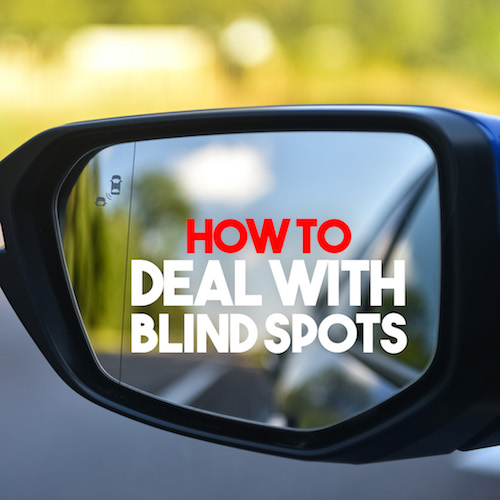Statistics from the United States NHTSA (National Highway Traffic Safety Administration) has shown that 37,133 US drivers died in 2017 alone, and research suggests that the majority of vehicle crashes are due to human error.
It’s a depressing statistic, but one that certainly proves how dangerous roads can be. While advancements in safety technology and driver aids are moving at a blistering pace, it’s important to remember the very human element that plays an even bigger role in driving safety.
Ultimately, it is the human behind the wheel who will be the deciding factor in whether an accident happens or is avoided. There are many factors to remain cognizant of as a safe driver on the road, but one in particular is especially important: blind spot management.
Further information from the NHTSA shows that over 800,000 blind spot accidents occur each year in the US, resulting in hundreds of fatalities. Although certainly alarming, there are many ways to deal with blind spots and consequently lead to better, safer drivers.
What does that start with? Something you’ve (hopefully!) already done: adjusting your mirrors, although perhaps in a slightly different way than you’re used to.
ADJUSTING YOUR MIRRORS
In 1995, SAE International (formerly known as the Society of Automotive Engineers) published a paper detailing suggested methods to position your mirrors in such a way that would eliminate blind spots.
Although the paper itself is 16 pages long, the basic premise revolves around maximizing your viewing space, both with the side and rear mirrors.
When setting your side mirrors, this entails sitting down in your normal driving position in the driver’s seat, then leaning left and right to adjust the appropriate mirrors. They should be adjusted so that you can’t see your car’s sides when sitting centered in the driver’s seat.
As for the rearview mirror, adjust it so that you can only see the road and vehicles behind you. Keep it centered, too. This position affords you the best view possible, maximizing your perception of any vehicles or objects behind you.
It may take some getting used to at first, especially if you’ve never driven with your mirrors adjusted in this manner. Once you do get used to it, however, it’ll be hard to go back to a worse view.
Be sure to consult SAE International’s official paper to nail the details in case you’re confused!
BLIND SPOT WARNING TECHNOLOGY
Many modern cars now come with blind spot detection, and thankfully some even have this technology offered standard. As the name suggests, blind spot detection (or monitoring, or warning; it goes by several names) allows one to detect vehicles in one’s blind spots.
Most systems work as such: When a vehicle is detected in one’s blind spot, a sound is produced that’s audible even at highway speeds. It’s paired with a visual warning—most often a flashing light. Both this audio and visual cue are designed to alert you to the presence of vehicles.
This system may seem superfluous at first, especially if you’re used to driving a car without it, but its benefits are definitive and work to make you safer.
If your vehicle does not feature this technology, don’t worry, there’s something else you can do. Although not a true alternative to blind spot detection, you may wish to consider installing blind spot mirrors on your existing mirrors.
These are simply small, unobtrusive mirrors which obviously do not give you any kind of audible or visual warning of a vehicle in your blind spot, but do make you more aware of any which may be there due to a wide-angle view; much wider than your standard side mirrors.
DRIVING SAFELY AND CAREFULLY
No matter how the mirrors are adjusted, or what safety technology is in use, or if extra mirrors are installed, the most important factor is the human behind the wheel. A safe driver who changes lanes carefully will be safer than a careless driver with all the safety tech in the world.
While the aids we’ve detailed above are certainly helpful (we definitely recommend trying out adjusting your mirrors as described above!), one shouldn’t rely on them alone.
Focus on being safe and careful; always be sure it’s safe to do a lane change or to pull out of a parking spot. If you’re not sure it’s safe to do so, wait and visually confirm when it is.
If it all sounds simple, that’s because it is! Be patient, careful, and courteous, and you’ll be the safest driver on the road, to the benefit of you and all others.
